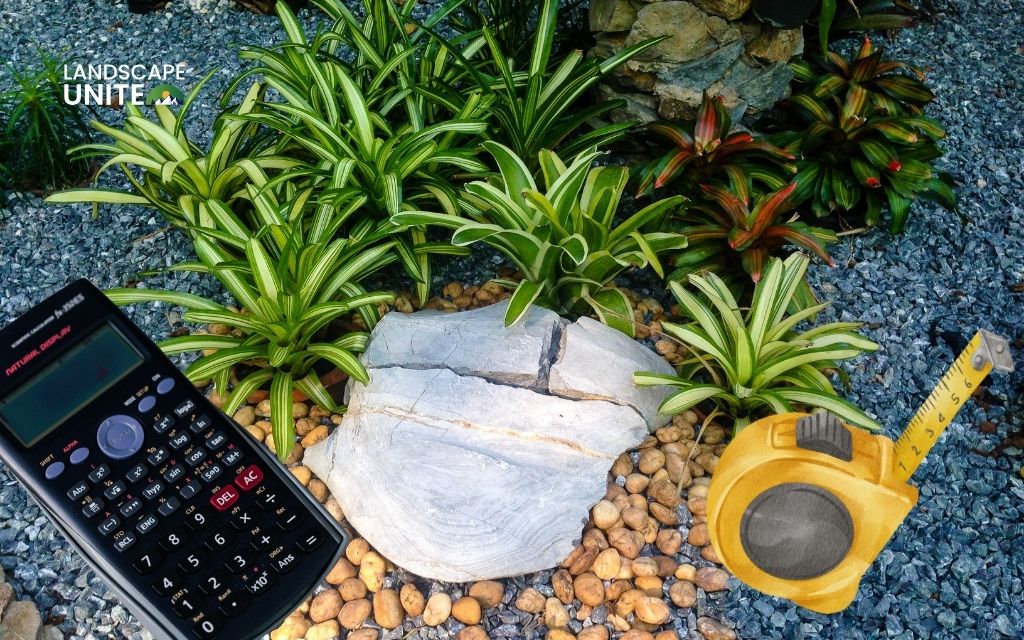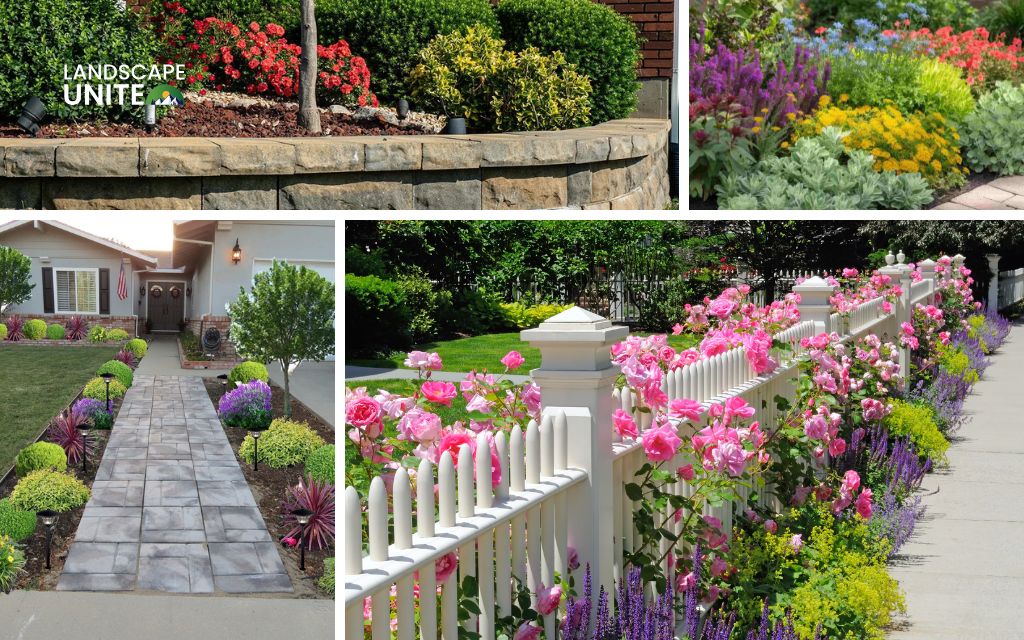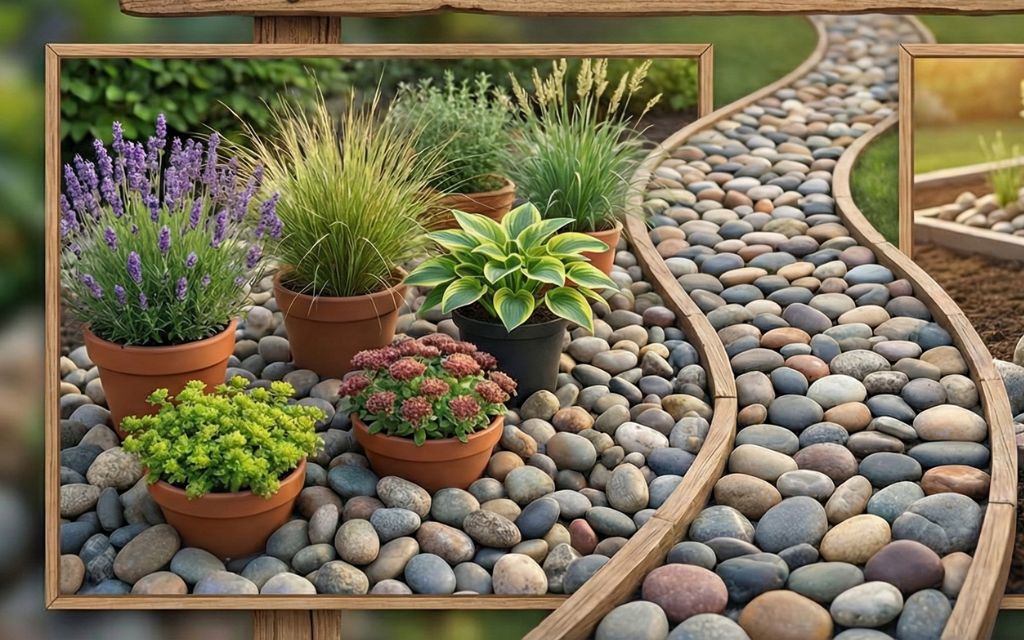Unlike perennials that return yearly, annuals complete their life cycle in one season, channeling all their energy into producing spectacular, continuous blooms from spring through fall.
Annual flower beds deliver instant gratification with bold color combinations that adapt to any style – cottage garden pastels, modern monochromatic schemes, or pollinator-friendly displays. Their greatest advantage? Creative flexibility to experiment with new looks each year without long-term commitment.
This guide presents 25 inspiring annual flower bed combinations plus expert tips for planning, planting, and maintaining thriving displays that deliver maximum visual impact with minimum fuss.
What are annual flower beds?
Annual flower beds are garden spaces designed around plants that complete their life cycle – from seed to bloom to seed production – within a single growing season.
Unlike perennials that return each spring, annuals focus entirely on flower production, blooming continuously from spring planting until first frost.
This makes annuals perfect for seasonal design flexibility. While perennials provide permanent landscape structure, flower beds with annuals serve as your garden’s seasonal wardrobe, offering endless opportunities to experiment with new color combinations and themes each year.
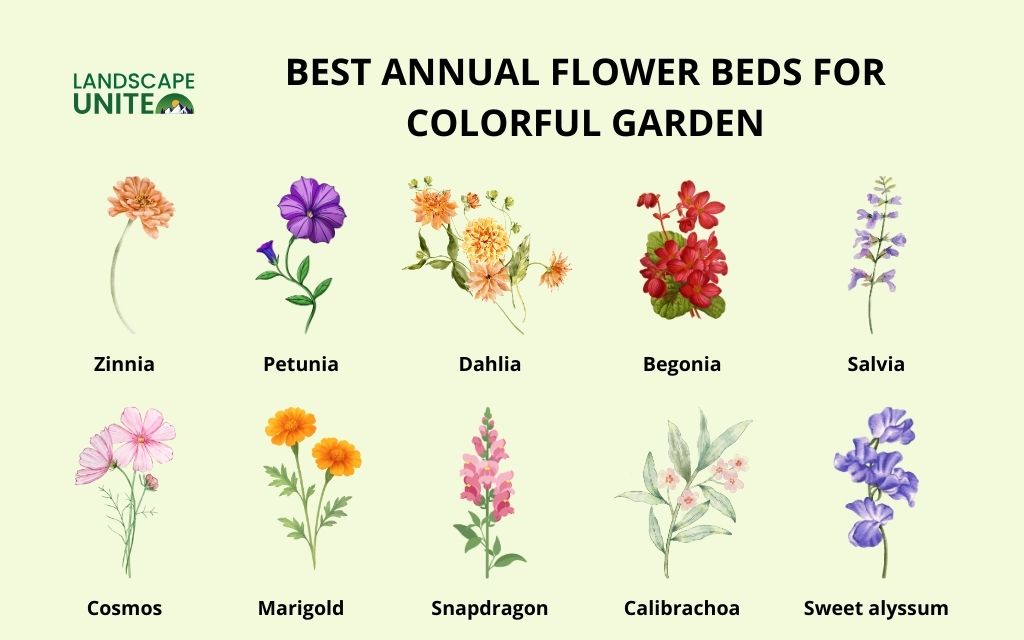
25 annual flower bed ideas for every style & season
1. Bold & bright border bed
Create an eye-catching border that commands attention with this vibrant trio. Golden marigolds provide sunny warmth, colorful petunias fill in with continuous blooms, and upright salvia adds height and texture. This combination thrives in full sun and delivers non-stop color from late spring through fall.
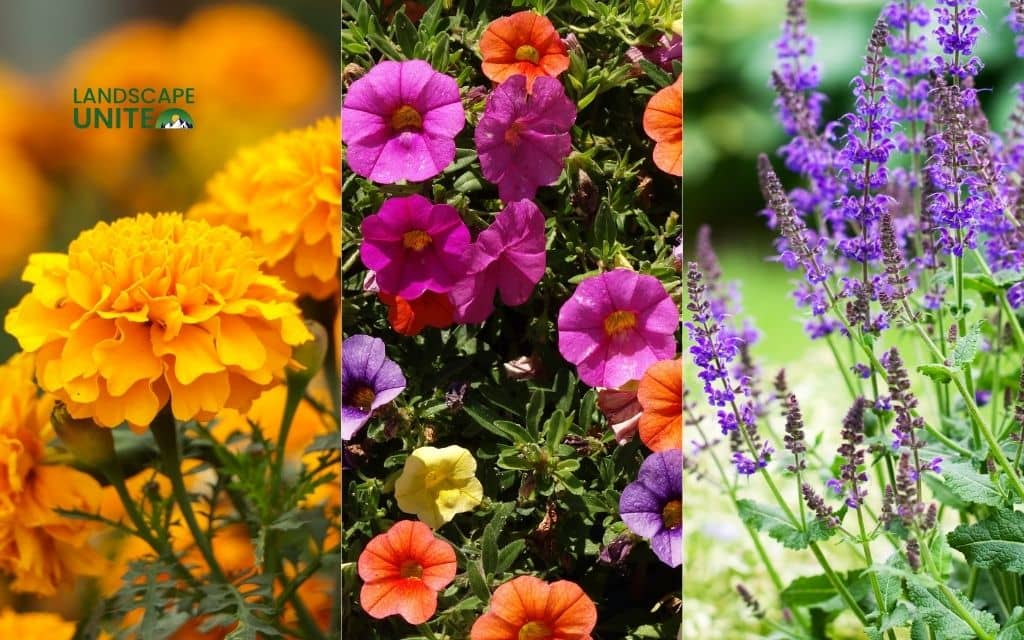
2. Shady garden glow
Transform dim corners into glowing displays with this shade-loving combination. Impatiens provide constant flowers in soft pastels, coleus contributes dramatic foliage in burgundy and lime, while begonias add waxy blooms and glossy leaves. Perfect for areas receiving morning sun or dappled light throughout the day.
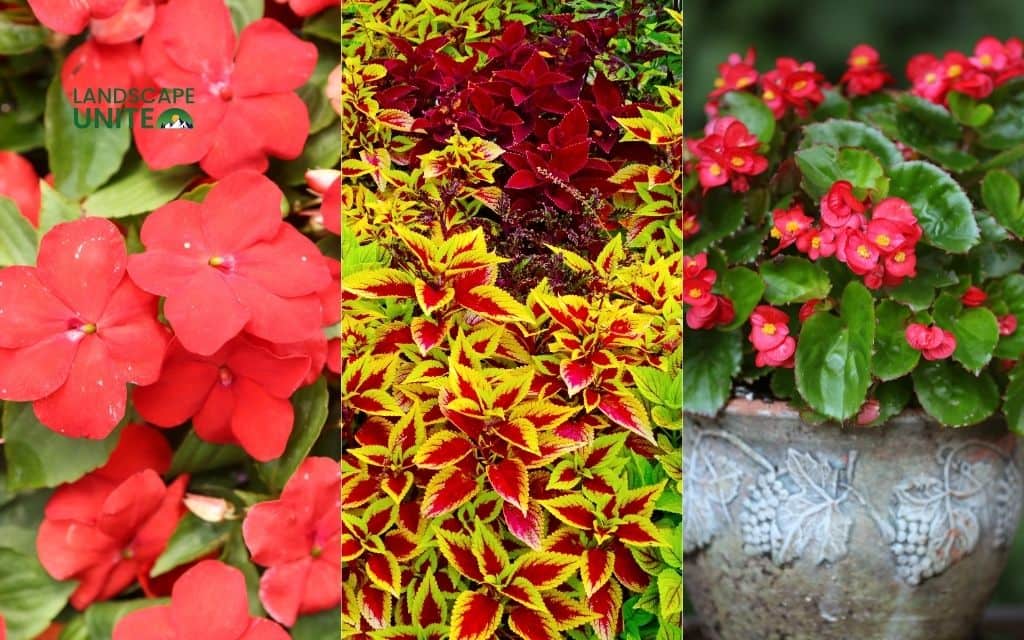
3. Tropical vibes
Bring exotic vacation feels to your backyard with this bold foliage combination. Heart-shaped caladiums flash pink, white, and green patterns, towering cannas contribute tropical flowers and broad leaves, while elephant ears create dramatic backdrops with their massive foliage. Ideal for creating private, jungle-like retreats.

4. Pollinator paradise
Support beneficial insects while enjoying abundant blooms with this eco-friendly selection. Zinnias attract butterflies with their flat, accessible flower heads, cosmos sway gracefully while feeding bees and beneficial wasps, and verbena creates dense mats of tiny flowers beloved by pollinators. Watch your garden come alive with beneficial activity.
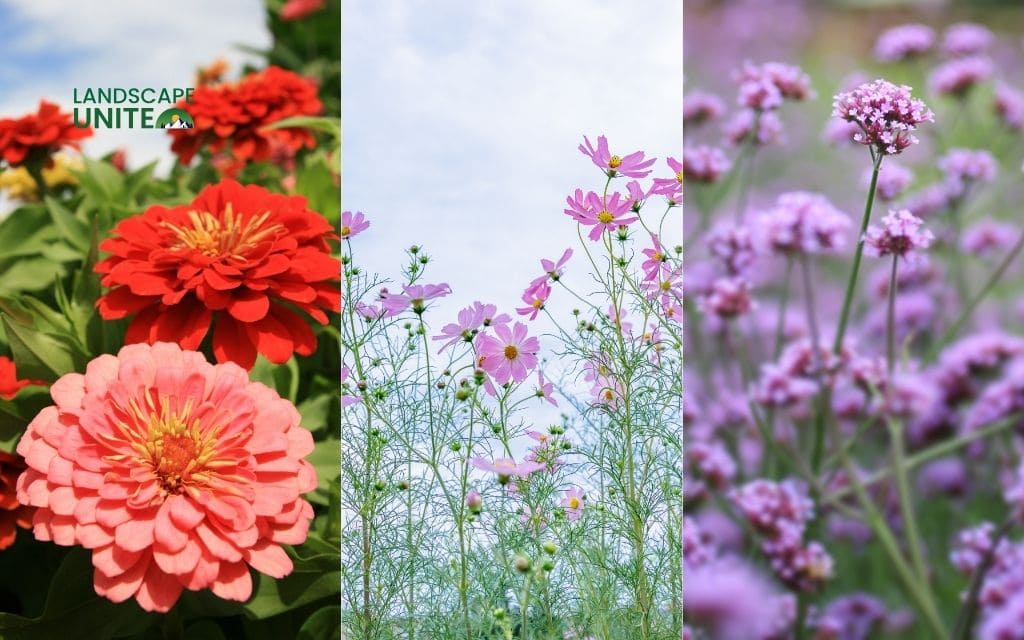
5. Modern monochrome
Achieve sophisticated elegance with this contemporary white and silver palette. Sweet alyssum creates soft, fragrant carpets, white petunias add bold flower power, while silvery dusty miller provides textural contrast and cool sophistication. Perfect for modern homes and formal landscape designs.
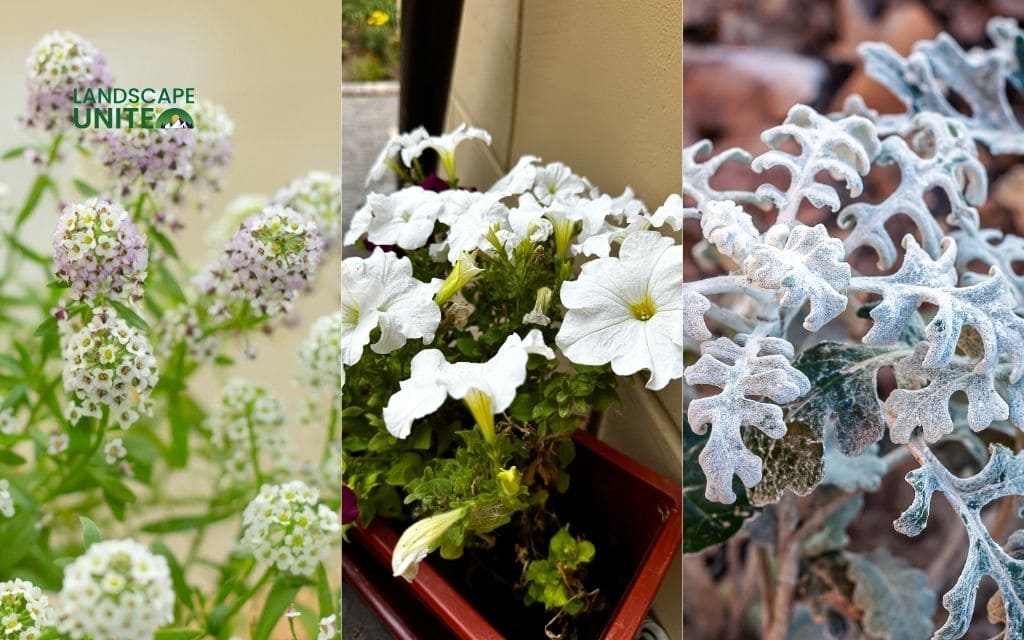
6. Red, white & bloom
Celebrate patriotic colors with this classic American combination. Red geraniums provide bold, weather-resistant blooms, white lobelia spills gracefully along edges, and blue salvia adds vertical interest with its spike-like flowers. Ideal for Memorial Day through Labor Day displays.
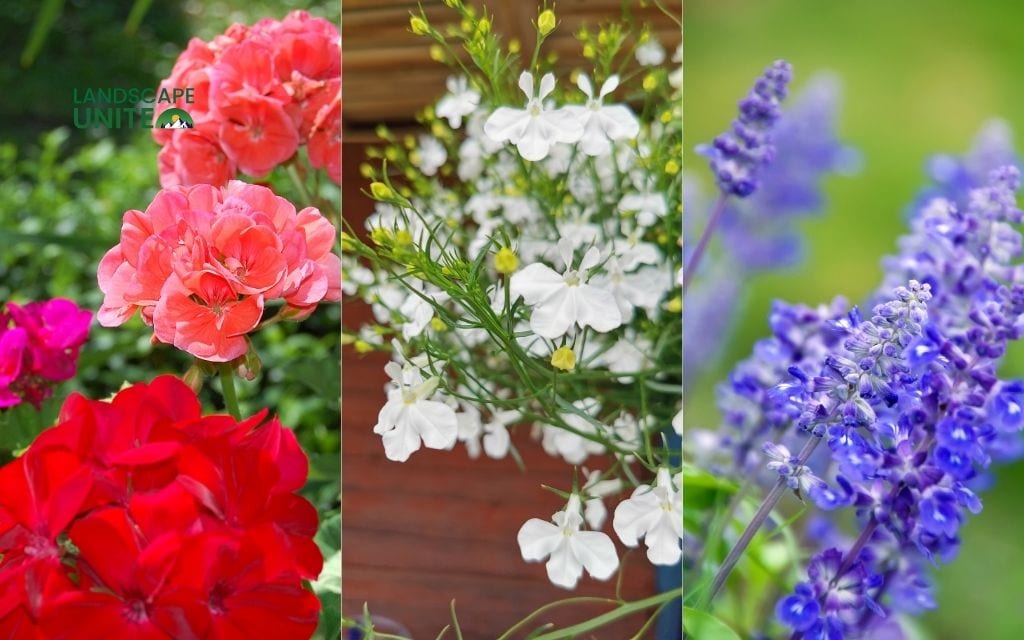
7. Cool blues & purples
Create serene, calming spaces with this soothing cool-toned selection. Trailing lobelia provides delicate flowers in true blue, angelonia adds snapdragon-like blooms in purple and white, while petunias fill gaps with their prolific flowering habit. Perfect for meditation gardens and relaxing outdoor spaces.

8. Sunny front walk
Welcome guests with this cheerful, heat-tolerant combination that loves full sun exposure. Towering sunflowers create dramatic backdrops, lantana provides continuous butterfly-attracting clusters, while globe-shaped gomphrena adds unique texture and excellent cut-flower potential.
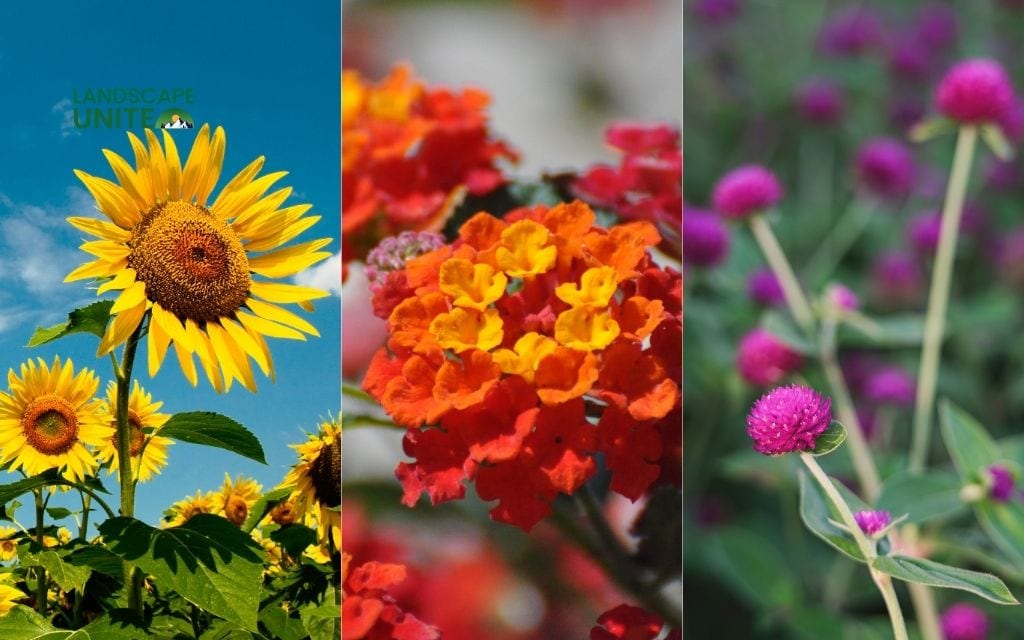
9. Cottage garden charm
Capture old-fashioned romance with this nostalgic selection that combines height, fragrance, and delicate beauty. Snapdragons provide vertical spikes in pastel shades, sweet alyssum carpets the ground with honey-scented flowers, while dianthus contributes spicy-scented, fringed petals in pink and white.

10. Low-maintenance planter mix
Perfect for busy gardeners, this drought-tolerant trio thrives with minimal care. Glossy vinca blooms continuously in heat, feathery celosia adds texture and vibrant color, while succulent portulaca opens bright flowers each sunny morning. Ideal for container gardens and difficult growing conditions.

11. Fall flair
Extend your growing season with this cool-weather combination that peaks when summer flowers fade. Ornamental kale develops stunning purple, pink, and cream rosettes as temperatures drop, while pansies and violas provide cheerful faces that actually prefer autumn’s cooler conditions.
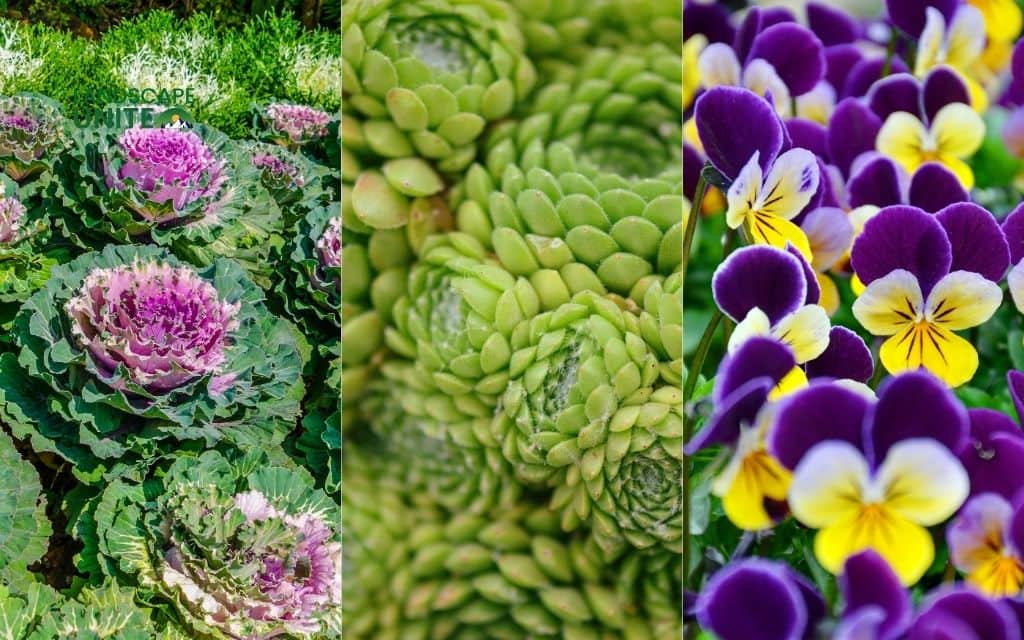
12. Window box wow
Create cascading displays perfect for elevated plantings with this trailing combination. Edible nasturtiums spill over edges with bright orange and yellow flowers, million bells provide tiny petunia-like blooms in abundance, while delicate bacopa adds clouds of small white or blue flowers.
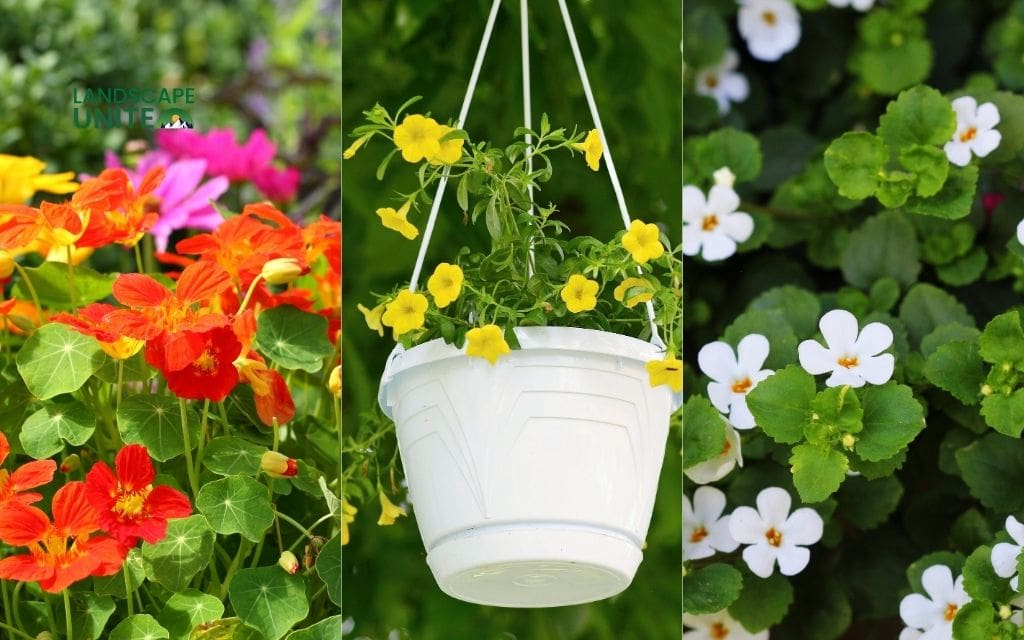
13. Desert color blast
Thrive in hot, dry conditions with this water-wise selection that laughs at summer heat. Gazania opens daisy-like flowers in brilliant oranges and yellows, drought-tolerant marigolds provide reliable color, while verbena creates spreading mats that require minimal water once established.

14. Urban container combo
Perfect for balcony gardens and urban settings, this container-friendly trio provides maximum impact in limited space. Calibrachoa blooms prolifically in small spaces, colorful sweet potato vine trails gracefully over container edges, while compact salvia varieties add height without overwhelming small areas.
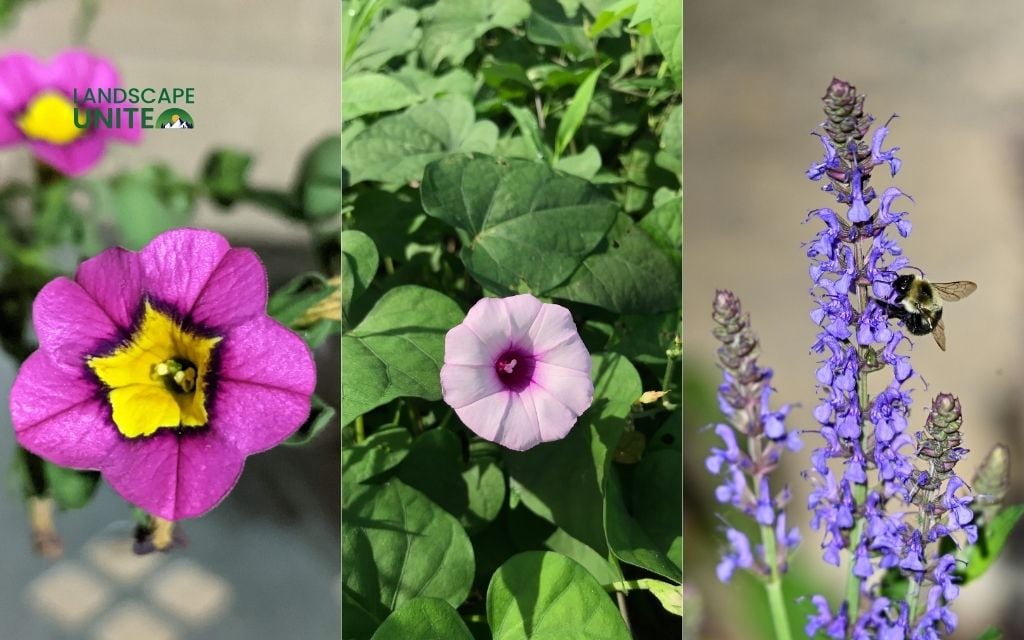
15. Tough heat-lovers
Beat summer’s worst weather with this resilient combination that actually improves with heat. Heat-loving zinnias bloom more profusely as temperatures rise, star-shaped pentas attract butterflies while tolerating humidity, and cheerful coreopsis provides daisy-like flowers that handle drought with ease.
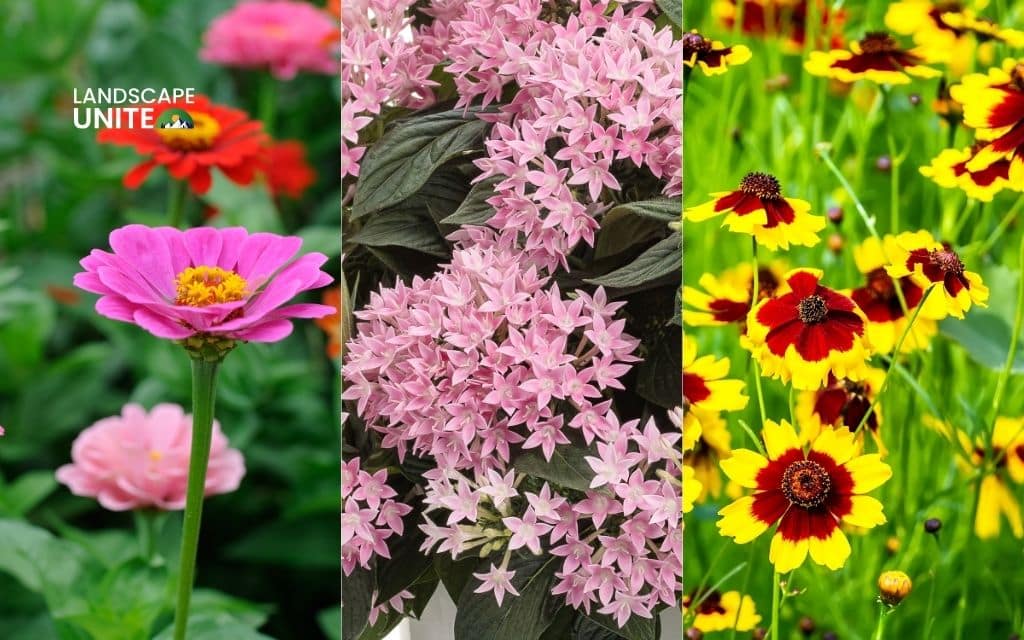
16. Textural delight
Add movement and modern appeal with this texture-rich combination. Ornamental fountain grass (Pennisetum) sways gracefully in breezes, petunias provide bold flower color at mid-level, while snapdragons contribute vertical spikes that contrast beautifully with grass plumes.
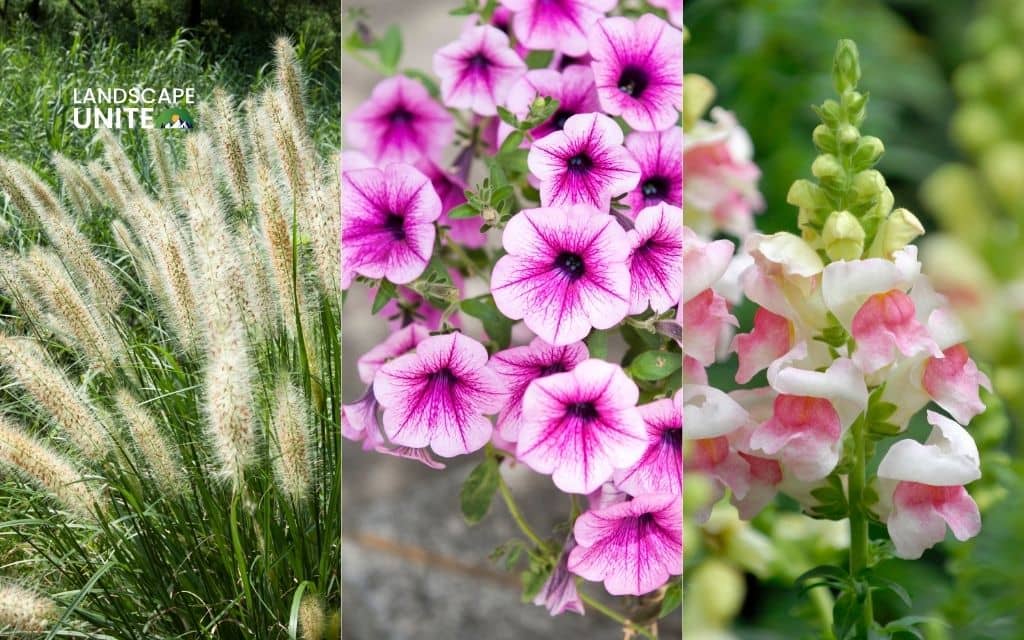
17. Patio punch
Create sophisticated container displays with this upscale combination perfect for entertaining areas. Bold gerbera daisies provide focal points with their large, perfect blooms, nemesia adds delicate fragrance and cottage charm, while euphorbia contributes unique foliage and architectural interest.
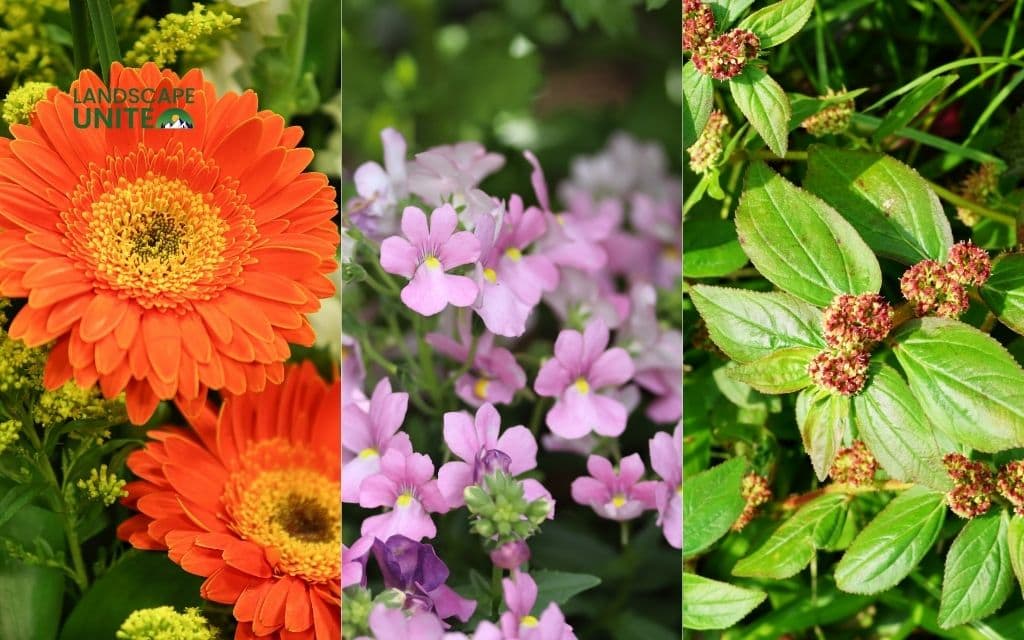
18. Beachy blend
Capture coastal vibes with this salt-tolerant selection ideal for seaside gardens or anywhere you want beach house style. Compact sea thrift forms grassy mounds topped with pink pom-pom flowers, trailing lobelia mimics ocean waves, while crisp white vinca provides clean, nautical contrast.
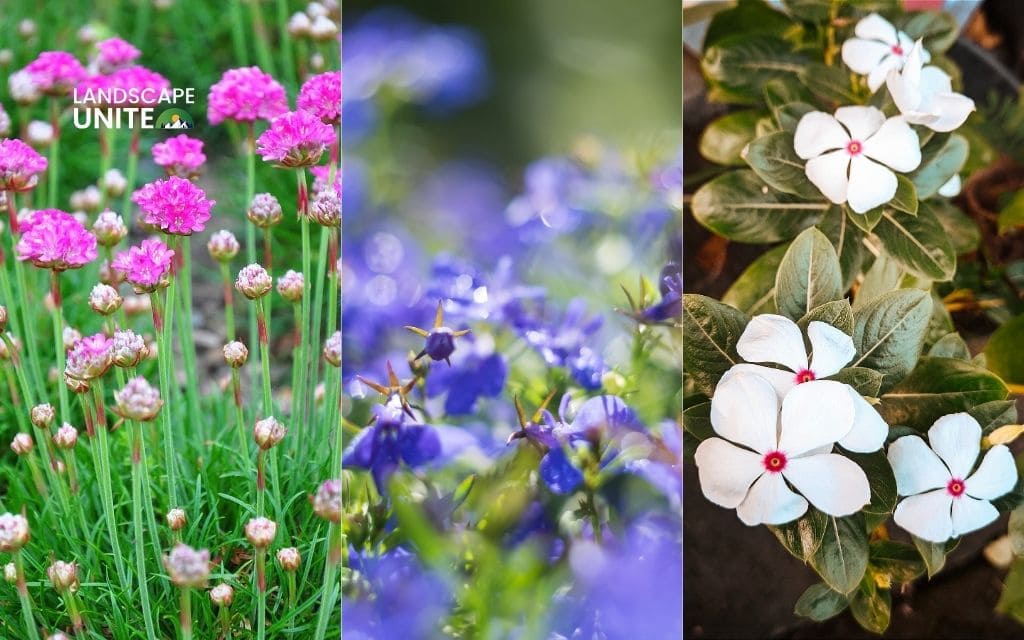
19. Pink passion bed
Embrace feminine romance with this monochromatic pink paradise that blooms from spring through fall. Pink petunias provide reliable base color, tall cleome (spider flower) adds airy height with its unique blooms, while pink zinnias contribute bold, cheerful faces that butterflies adore.
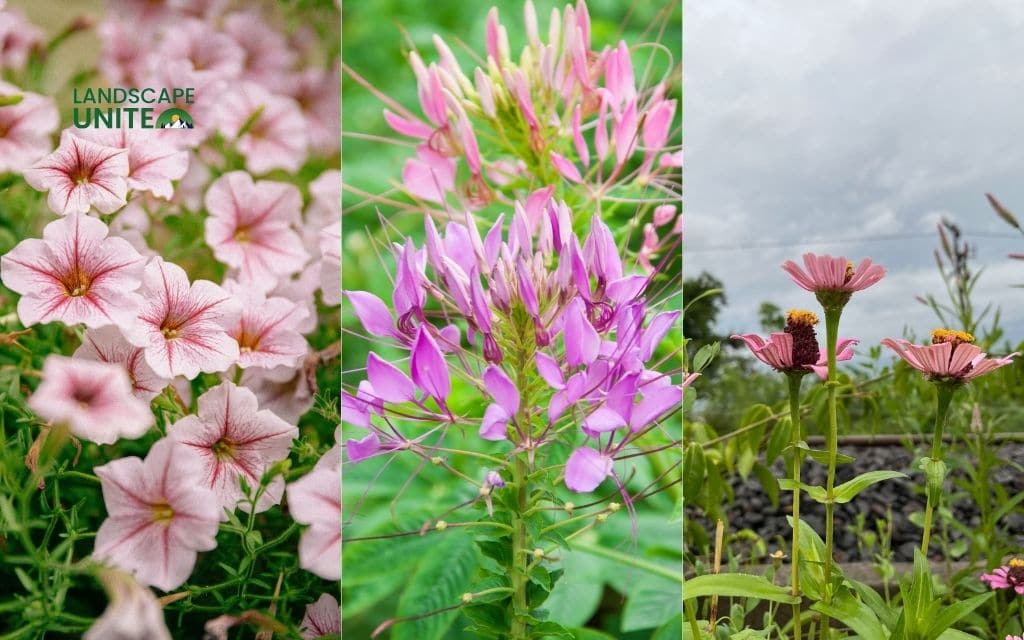
20. Golden glow
Celebrate autumn’s golden hour with this warm-toned combination that peaks as summer transitions to fall. Black-eyed Susan (Rudbeckia) provides classic daisy shapes, calendula offers edible petals and continuous blooms, while gaillardia adds blanket flower charm with its multi-colored petals.
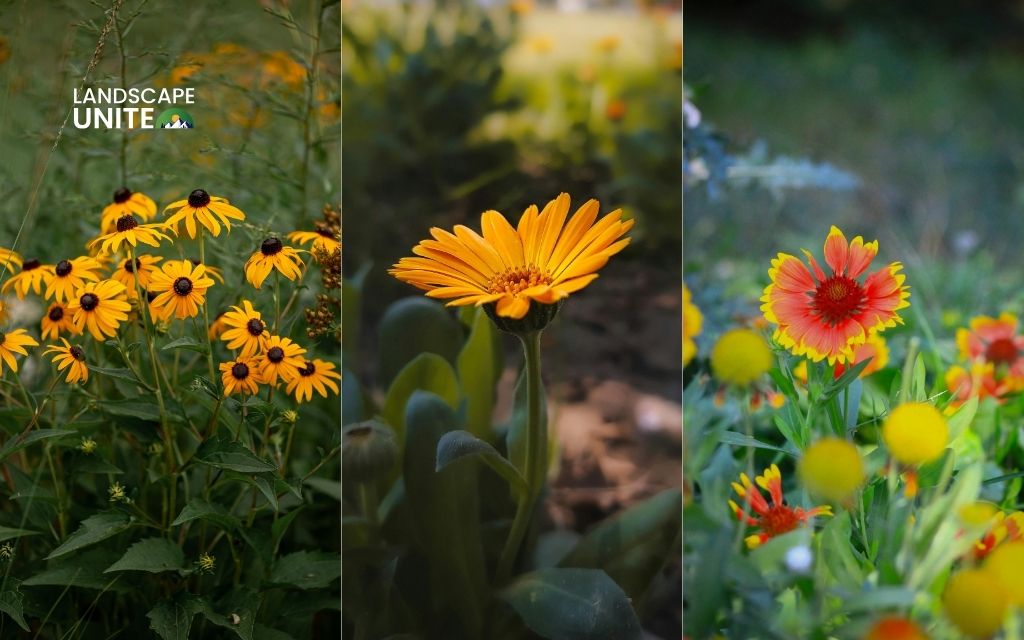
21. Fragrant favorites
Engage the senses with this aromatic selection perfect for seating areas and evening gardens. Evening stock releases intoxicating fragrance at dusk, sweet alyssum provides honey-scented groundcover, while night-blooming nicotiana opens tubular flowers that perfume evening air.
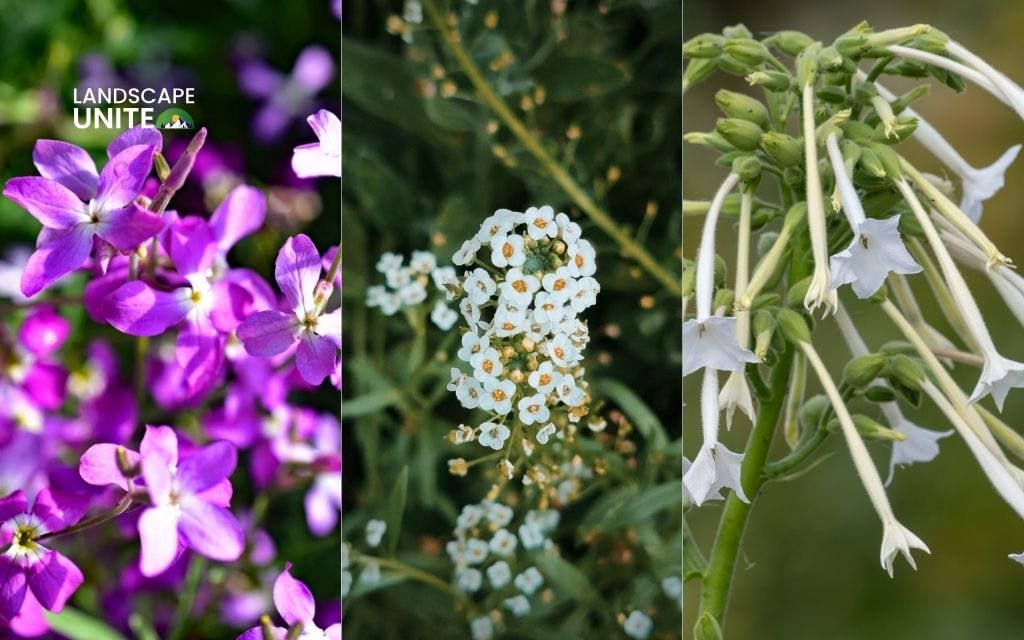
22. Kids’ butterfly garden
Create educational magic with this child-friendly combination that attracts butterflies and teaches nature appreciation. Easy-growing cosmos provide flowers perfect for small hands to pick, bright orange tithonia (Mexican sunflower) draws monarchs and swallowtails, while lantana offers rainbow-colored clusters that kids love to observe.
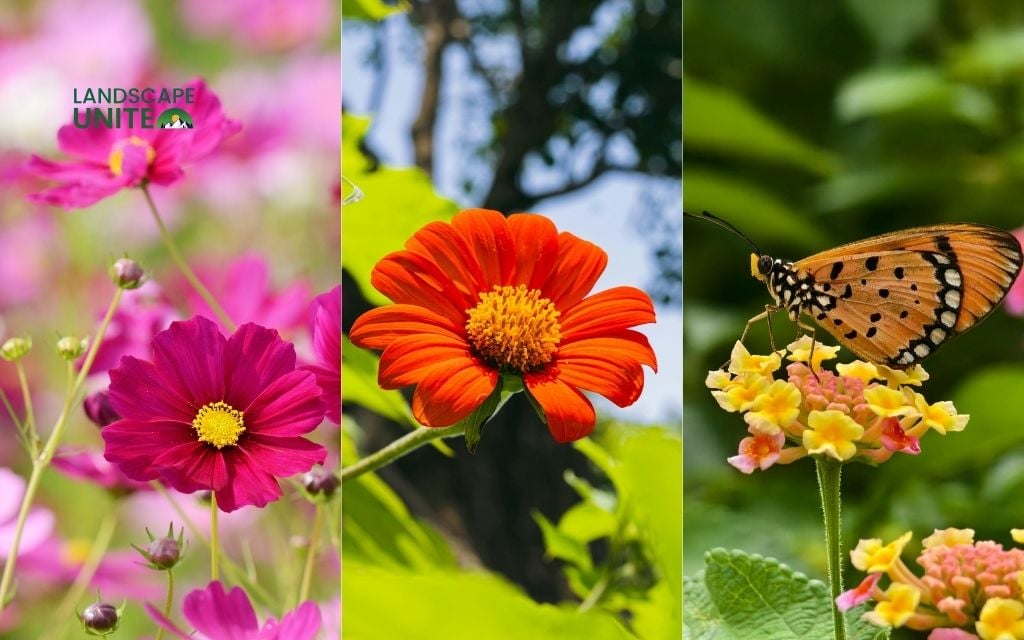
23. Edible & ornamental
Combine beauty with function in this edible landscape that feeds both eyes and table. Colorful nasturtiums provide peppery leaves and flowers for salads, rainbow Swiss chard contributes stunning stems and nutritious leaves, while ornamental kale offers both visual appeal and healthy harvests.
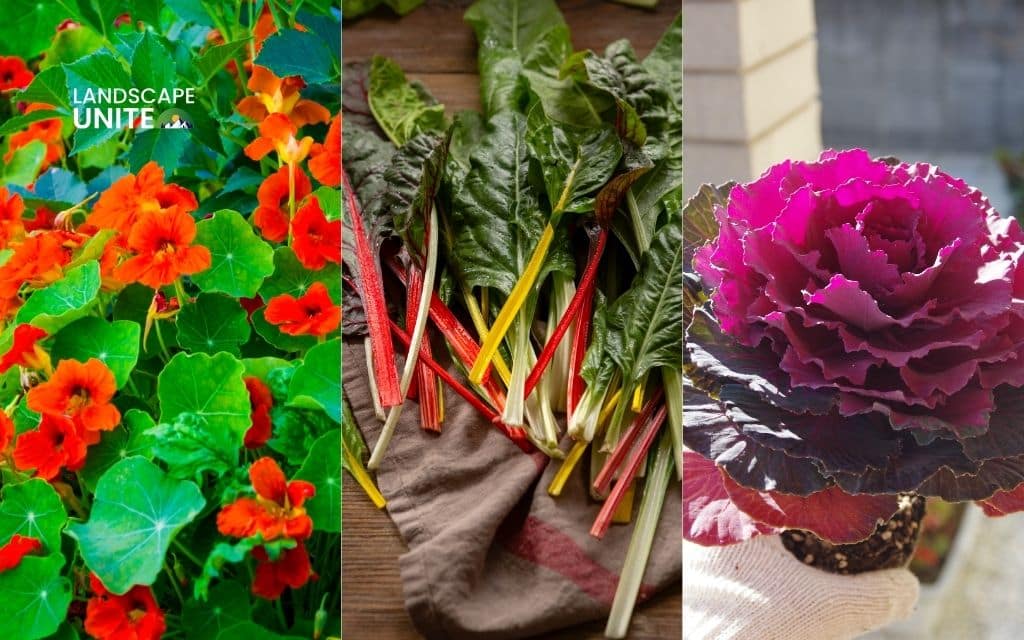
24. Driveway drama
Create impressive curb appeal with this bold combination that makes powerful first impressions. Tropical cannas provide height and exotic flowers, colorful salvia adds mid-level spikes, while begonias carpet the foreground with continuous, weather-resistant blooms.

25. All-season mix
Maintain color year-round with this succession-planted bed that changes with seasons. Cool-season pansies provide spring and fall interest, heat-loving petunias take over summer duties, while ornamental cabbage extends beauty into winter in mild climates.
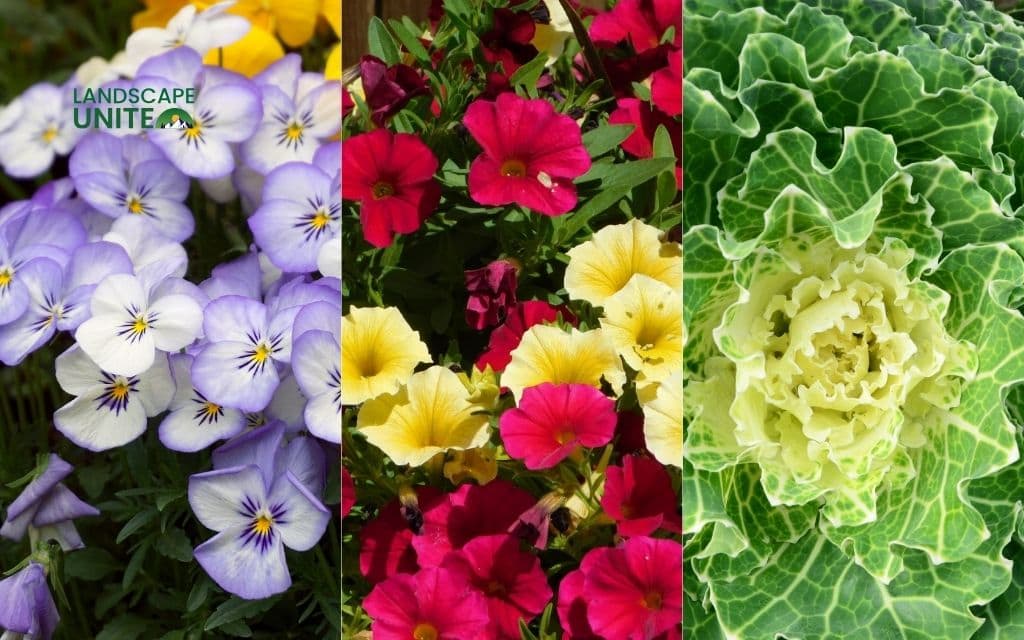
Planning your annual flower bed
Consider your sunlight conditions
Success starts with an honest assessment of your site’s daily sunlight exposure. Most annuals fall into three categories: full sun (6 – 8 hours direct sunlight), partial shade (4 – 6 hours), and shade tolerant (less than 4 hours).
Full sun sites offer the widest plant selection including marigolds, zinnias, and sunflowers. Partial shade supports impatiens, begonias, and coleus. True shade requires careful selection with varieties like caladiums and begonias.
Soil preparation and drainage
Annual flower beds thrive in well-draining soil enriched with organic matter. Most annuals prefer neutral to slightly acidic soil (pH 6.0 – 7.0), but proper drainage is more critical than perfect pH.
Test drainage by digging a 12-inch hole and filling with water. If water remains after 24 hours, improve drainage by raising beds 4 – 6 inches, incorporating coarse sand, or installing drainage systems.
Enrich soil by incorporating 2 – 3 inches of quality compost or aged manure before planting. This improves drainage in clay soils while increasing water retention in sandy conditions.
Color schemes & texture combinations
Balance color harmony with textural interest for visually appealing displays. Choose schemes that complement your home’s exterior while reflecting personal style.
- Monochromatic schemes using various shades of single colors create sophisticated, unified looks.
- Complementary schemes using opposite colors (purple and yellow, red and green) provide dramatic contrast.
- Analogous schemes with adjacent colors (blue, purple, pink) create harmonious, restful combinations.
Consider foliage colors equally important as flowers, incorporating silver, burgundy, lime, and variegated leaves for depth and interest.
Spacing & plant height for layered look
Arrange plants in layers: tallest in back (or center for islands), medium-height in middle, compact varieties along edges. This ensures adequate light while creating visual depth.
Follow spacing recommendations to allow air circulation and prevent overcrowding. Use odd numbers (groups of 3, 5, or 7) planted in triangular patterns for natural, professional appearances.
Seasonal succession planting
Maximize color by planning early, mid, and late-season bloomers.
Cool-season annuals like pansies prefer spring and fall, while warm-season varieties like petunias peak during summer heat.
Reserve spaces for seasonal changeouts or interplant varieties to extend blooming periods.
Remove spent cool-season plants as temperatures rise, replacing with heat-tolerant varieties for continuous summer color.
Annuals vs. perennials: can you mix them?
Combining annuals with perennials creates dynamic beds offering both seasonal flexibility and permanent structure. This approach provides a reliable perennial framework enhanced by changeable annual displays that keep gardens fresh.
Use perennials as backbone plants for consistent structure, then fill spaces with seasonal annuals that complement existing colors. This reduces annual planting requirements while maintaining continuous interest throughout growing seasons.
- Plant perennials first as anchors and focal points, then add annuals around them.
- Choose annuals that bloom when perennials are dormant or between flowering periods.
- Spring bulbs provide early color before warm-season annuals begin, while fall annuals extend seasons after summer perennials finish.
- Time annual plantings to coordinate with perennial care schedules, using annual displays to maintain beauty during perennial renovation periods.
Seasonal care for annual flower beds
Spring & summer tips
Maintain peak performance throughout the growing season with regular deadheading, proper feeding schedules, and vigilant pest monitoring.
- Deadheading – removing spent flowers before they set seed – encourages continuous blooming by directing plant energy into producing new flowers rather than developing seeds.
- Feed annual flower beds regularly with balanced fertilizers designed for flowering plants (monthly of granular fertilizer or bi-weekly for liquid fertilizer). Avoid high-nitrogen fertilizers.
- Monitor for pest and disease problems weekly. Common issues include aphids, spider mites, and fungal diseases that develop during humid conditions. Early detection and treatment prevent minor problems from becoming major infestations.
Fall cleanup & replanting
Extend growing seasons and prepare for next year’s plantings with proper fall cleanup and soil preparation.
- Remove spent plants after the first hard frost. Some annuals like pansies actually prefer cool weather and provide color well into winter in mild climates.
- Compost healthy annual plant material after removing from beds, but dispose of diseased or pest-infested plants in household waste to prevent spreading problems to compost piles.
- Rejuvenate soil for next season by incorporating fresh compost, aged manure, or commercial soil amendments after removing spent plants.
- Consider planting cool-season annuals like pansies, violas, and ornamental kale for fall and winter color in mild climates. These varieties prefer cooler temperatures and provide cheerful color during cold months.
Conclusion
Creating stunning annual flower beds doesn’t require years of gardening experience or a natural green thumb – just enthusiasm, basic planning, and willingness to experiment with nature’s incredible palette of seasonal colors.
The beauty of working with annuals lies in their forgiving nature and spectacular results, making them perfect for gardeners at any skill level.
Don’t hesitate to mix bold colors, experiment with different heights and textures, or try unconventional combinations that reflect your personal style. Each growing season offers fresh opportunities to learn, adjust, and discover new favorites that bring joy to your outdoor spaces and pride to your gardening achievements.
With thoughtful planning and the inspiring ideas shared in this guide, your yard can showcase continuous color from spring’s first warm days through fall’s final flourish.
Looking for more inspiring gardening ideas and tips? Check out our knowledge hub’s article library.
Frequently asked questions (FAQs)
How long do annual flowers last?
Annual flowers typically bloom from planting time until the first hard frost, providing 4 – 6 months of color in most climates. Cool-season annuals may last even longer in mild winter areas, while warm-season varieties peak during summer and decline with cooler fall temperatures.
Can you mix annuals with vegetables?
Absolutely! Many annuals make excellent companion plants for vegetable gardens, providing pest control and attracting beneficial insects. Marigolds deter harmful insects, nasturtiums repel aphids and provide edible flowers, while alyssum attracts beneficial insects that control garden pests naturally.
What’s the easiest annual to grow for beginners?
Marigolds top the list for beginner-friendly annuals due to their heat tolerance, pest resistance, and reliable blooming habit. Zinnias, sunflowers, and cosmos also offer foolproof success with minimal care requirements, making them perfect confidence-builders for new gardeners.
Do annuals need fertilizer?
Yes, regular feeding helps annuals maintain blooming throughout the growing season. Apply balanced fertilizer monthly or use liquid fertilizers bi-weekly during active growing periods. Avoid high-nitrogen formulas that promote leaf growth over flower production.
What are the best annuals for pots and containers?
Compact varieties like petunias, calibrachoa, impatiens, and begonias excel in containers due to their continuous blooming habits and manageable sizes. Trailing varieties like sweet potato vine, bacopa, and nasturtiums add cascading appeal to elevated plantings and hanging baskets.
